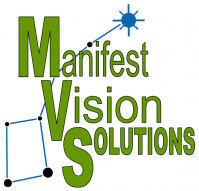Why
 I know why I created Manifest Vision Solutions. With the varied transformation program experience I have gained over the years, I know I can help many organizations (as opposed to just one) to successfully implement change. But I have been hard pressed to specify the value add and the difference I believe I can make for others. After rereading Good to Great by Jim Collins and having some random meetings with colleagues from different points in time during my career over the last few weeks, I have received my “Aha!” moment.
I know why I created Manifest Vision Solutions. With the varied transformation program experience I have gained over the years, I know I can help many organizations (as opposed to just one) to successfully implement change. But I have been hard pressed to specify the value add and the difference I believe I can make for others. After rereading Good to Great by Jim Collins and having some random meetings with colleagues from different points in time during my career over the last few weeks, I have received my “Aha!” moment.
It’s not program management or solution design or even organizational change per se that I am passionate about; it’s the combination of the three at the very beginning of the transformation process in order to set up for success. It’s program architecture that I have an affinity for. What do I mean?
For starters, it’s not really the business case that I am passionate about, although I can help there. It’s what happens after you’ve talked the organization into the multi-million dollar budget; what really has to happen to execute against that business case from a people, process and technology point of view.
Project or program management is not really what I do either; I don’t actually track the budget, maintain issues logs, update program plans or run status meetings. There are a lot of PMI (or not) project and program managers out there that do those tasks extremely well. However, those tasks don’t really happen until the program is already up and running. It’s what happens before you have issues or work breakdown structures or status meetings. It’s not about managing the program; it’s about planning the program!
It’s also not the detailed solution design I am passionate about but rather architecture of the overall solution, not any individual process or application but the business models, connections and dependencies between every process and application. As part of that, something I am very passionate about is critical data leverage. I believe this is the foundation for growth and scale for the future. It is the driver of your business models and determines the order for process flows within your solution and events within your program.
While change management is important (communicate, communicate, communicate and communicate again), it’s really change adoption that matters. Knowing what people to include, what roles they will play and tasks they’ll perform, for what purpose and at what time continually builds the team over the course of the program. That will then naturally deliver change adoption.
Due to owning the delivery of many complex, multi-million dollar change programs, I have been allowed a unique perspective across all three dimensions of change: people, process and technology. I have been responsible for organizational change within global teams under my leadership, I have designed business models and processes in areas where none have existed before and I have applied technology across generations of technological change for business benefit. Typically consultants are trained experts in one of these areas, I have been fortunate enough to live all three. I believe that gives me not only a unique perspective but has given me a gift for program architecture.
What is program architecture you might ask? Google it and see what you find; not what I am talking about! How about program planning? Once again not exactly what I had in mind although that’s part of it. Perhaps transformation planning? No, not quite. A colleague once told me that I value structure; little did I know just how correct she was. For me, program architecture is gaining consensus on specific objectives, outcomes and measures for the program, then structuring the tracks, teams, governance, dependencies, critical data objects, business models and processes, high level program milestones, releases and RASCIs into a pragmatic, actionable program that the organization can then go execute against.
My value-add is threefold: facilitation, pragmatism and speed. I have used facilitation methods informally most of my career and have recently added formal training in order to help teams rapidly get to consensus; in any meeting on any topic: form, storm, norm but get to perform and your desired outcome as fast as possible. For whatever reason, I have the ability to see both the forest and the trees (and sometimes the roots) and naturally understand how things fit together; I inherently know what will actually work and maybe more importantly what won’t work from experience, not from training. That is at the core of my value add, pragmatism. Coupled with that, I can pretty accurately estimate at a high level how long it will take to get the work done along with who is needed to get it done. All this combined together gets at the speed value; I can help your team get to, not a theory but, an executable program that works, and get you there faster. I help you get to kick off or launch, you take it from there.
I hope to bring value to as many organizations and teams as I possibly can by helping them get set up for success through architecting a pragmatic program they can execute against and manage. That is my manifest vision.
Ellen Terwilliger
November 2012
